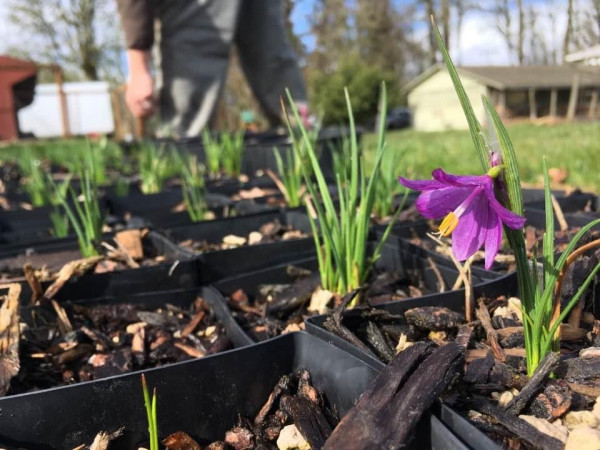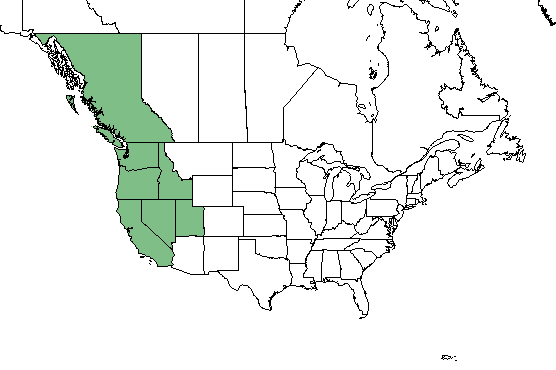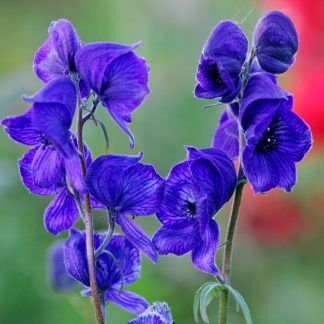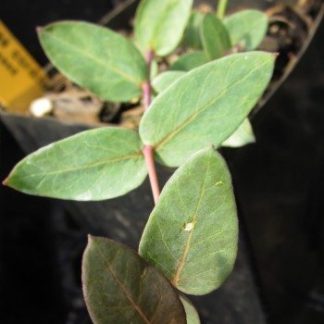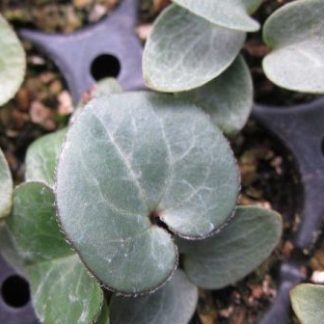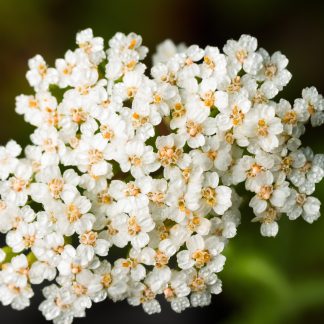Olsynium douglasii
Douglas' grass widow
Habit: this tufted perennial produces 1-foot tall stems with grass-like foliage and attractive reddish-purple blossoms. Its bracted basal leaves are just about 1 inch long and form dense clumps near the ground, while cauline blades grow upright reaching 6 inches in height. Flowers are borne singly or in pairs on the flattened stalks and bloom form early spring to early summer, sometimes as early as February. The corolla is bright pink with a satiny appearance, and is formed by three petals, three sepals, three protruding yellow stamens and a long, whitish pistil.
Ecology: it grows in moist to dry rocky bluffs, meadows and open oak lands, at low to mid elevations. It is found from British Columbia to northern California, and east to Idaho, northern Nevada and Utah.
Growing conditions: satin-flower favors full sun to light shade and soil that is moist to wet in the spring but drier during the summer. It is an ideal candidate for a rock garden or oak grove on either side of the Cascades. For most of the year, the plant remains hidden among wild grasses, but when it blooms in early spring, the beautiful, vibrant flowers are hard to miss. Lewis Clark accurately described this species as the “the reigning queen of the genus”.
Olsynium douglasii is sometimes classified within the Sisyrinchium genus and known as Sisyrinchium douglasii or Sisyrinchium grandifolium. It is also known by the common names “Douglas’ grass-widow” and “purple-eyed-grass”.
Specs
Herbaceous Perennial
4-12 inches (10-30 cm)
8-12 inches (20-30 cm)
5a to 9b

